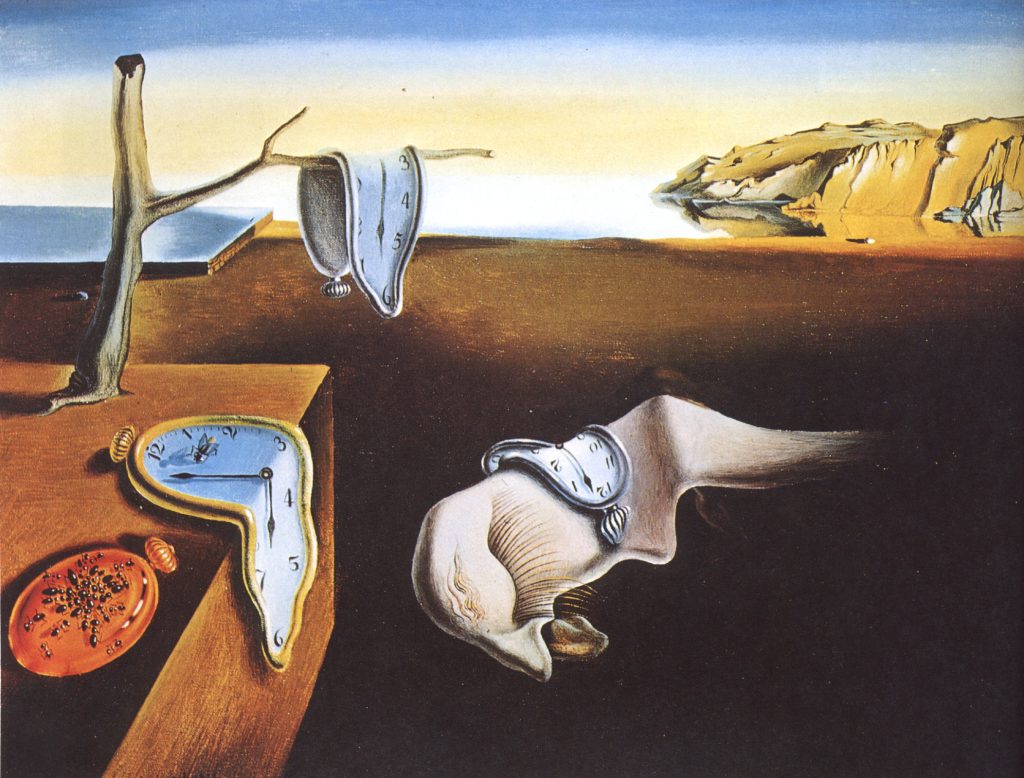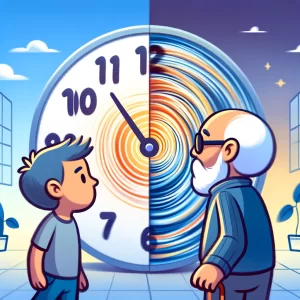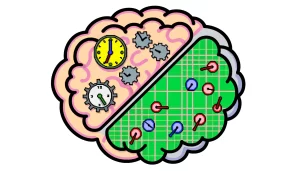
How We Feel and Measure the Passage of Time
Have you ever wondered why time seems to fly when you’re having fun but drags when you’re bored? This fascinating phenomenon has puzzled scientists for over a century. In the article “Time Perception: Challenges and Insights,” researchers explore the complexities of how we perceive time, offering both bad news about the current state of research and good news about promising new findings. Let’s explore this intricate world of time perception and see how it connects to our daily experiences.
The Complexity of Time Perception
The Bad News: It’s Complicated
One of the main challenges in studying time perception is its variability. Time perception can change based on the experimental context and the specific task at hand. This means that what we learn in a lab setting doesn’t always translate to real-world experiences. Additionally, there are significant individual differences in how people perceive time, which complicates the development of a universal theory.
Imagine you’re baking cookies. Sometimes, the minutes tick by slowly as you wait for the oven timer to go off. Other times, you might get distracted, and those same minutes seem to disappear. This variation isn’t just annoying—it’s a key obstacle in time perception research.
The Good News: New Research Brings Insights
Despite these challenges, new research is shedding light on the neural and information-processing bases of time perception. Scientists are beginning to understand how different parts of the brain work together to help us judge time. This knowledge is helping to address the complexities and individual differences that have long plagued this field of study.
How We Perceive Time
Temporal Illusions and Context Sensitivity
One of the fascinating aspects of time perception is how our brains can be tricked by “temporal illusions.” These are situations where the same amount of time feels different depending on the context. For example, a busy hour might seem shorter than an hour spent waiting in a doctor’s office. This difference arises because our perception of time is influenced by many factors, including our activities, emotions, and even the environment.
Scientists have found that non-temporal factors, like the intensity or size of a stimulus, can significantly alter our perception of time. For example, a bright light might seem to last longer than a dim one. This effect is similar to how a fun event can seem to pass quickly while a dull one drags on. These findings show just how complex and context-sensitive our internal clocks are.
Individual Differences in Time Perception
Why We Don’t All Perceive Time the Same Way
Another major challenge in time perception research is the significant individual differences in how we perceive time. Some people are naturally better at estimating durations, while others might struggle with even basic time judgments. Various factors, including genetics, neurochemistry, and personal experiences can influence these differences.
For instance, in experiments where participants are asked to judge the length of a tone, some people consistently overestimate while others underestimate. This variability means that any universal model of time perception must account for a wide range of individual experiences and abilities.
Real-World Applications
From Labs to Real Life
One criticism of time perception research is that it often relies on artificial tasks and simple stimuli that don’t reflect real-world experiences. However, recent studies are beginning to address this by using more naturalistic settings and complex, dynamic stimuli. For example, researchers have studied how gamers perceive time during their gameplay. They found that players often overestimate the amount of time they’ve spent playing, especially when they’re fully immersed in the game.
This kind of research helps bridge the gap between lab findings and everyday experiences, providing a more comprehensive understanding of how we perceive time in different contexts.
New Models and Theories
Unifying Frameworks for Understanding Time Perception
Despite the complexities and individual differences, researchers are developing new models to better explain how we perceive time. These models consider various factors, such as attention, memory, and neural processes. For example, one theory suggests that our brain uses an internal clock, where neurons act like a pacemaker to measure time. Other models propose that our perception of time is influenced by the patterns of neural activity triggered by stimuli.
These theories are helping to create a more unified framework for understanding time perception, integrating findings from psychology, neuroscience, and cognitive science.
Discussion Questions
- Have you ever experienced a situation where time seemed to pass unusually quickly or slowly? What do you think influenced your perception in that moment?
- How do you think understanding time perception could improve areas like education, workplace productivity, or mental health?
Conclusion
Time perception remains one of the most intriguing and challenging areas of research in psychology and neuroscience. While the field faces significant obstacles, recent advances are providing valuable insights into how we perceive the passage of time. By understanding the complexities and individual differences in time perception, we can develop better models and applications that enhance our daily lives. So the next time you find yourself wondering why time seems to fly or crawl, remember that it’s all part of the intricate workings of your brain.
Unlock Science Secrets:
Discover revolutionary research and innovative discoveries with ‘This Week in Science’! Designed for educators and science lovers, our free weekly newsletter offers insights that can transform your approach to science. Sign up now and deepen your understanding and passion for science.



